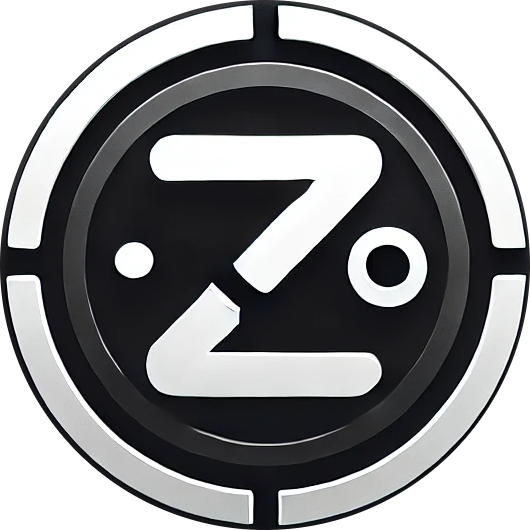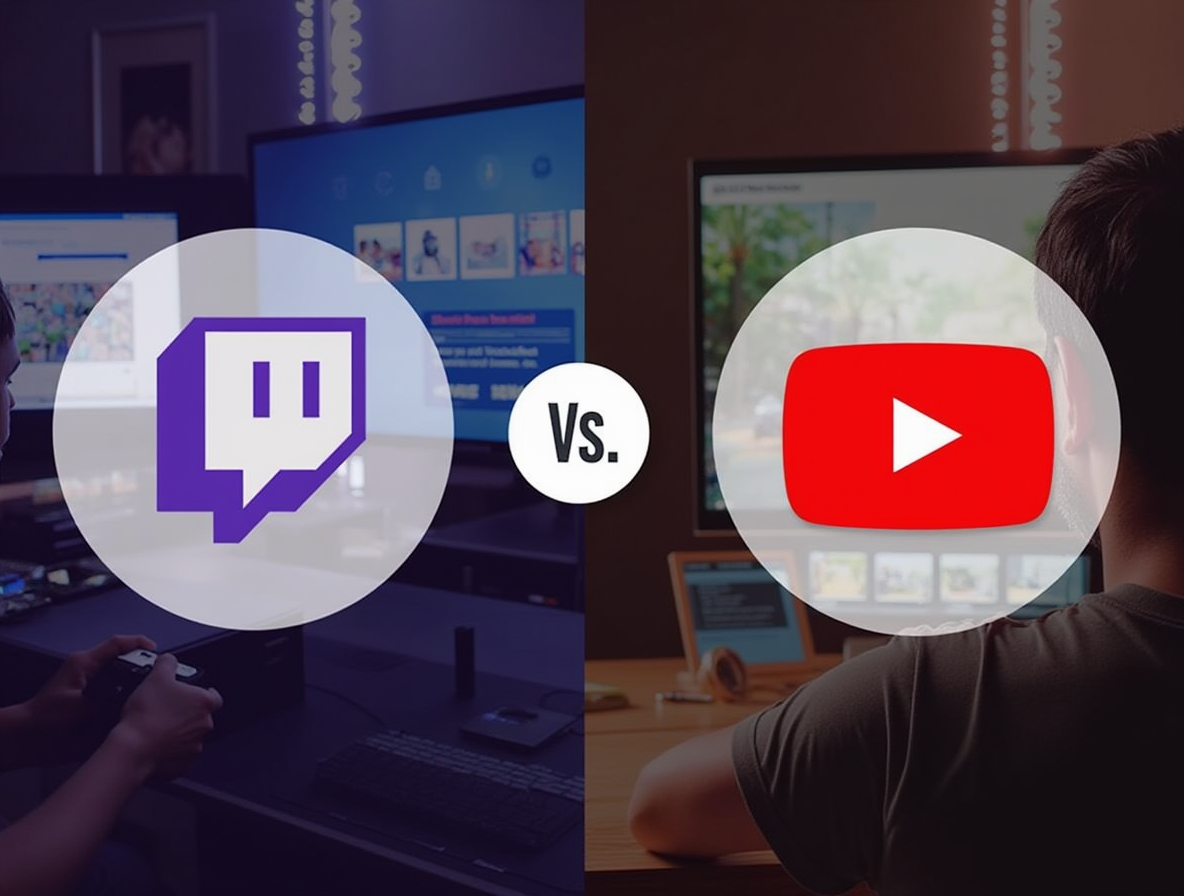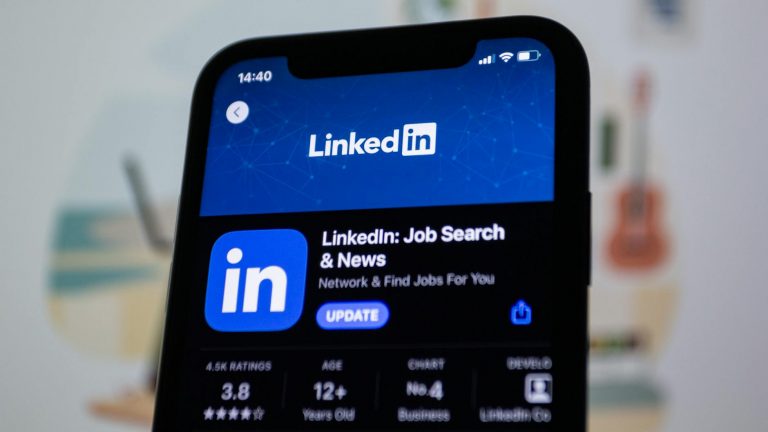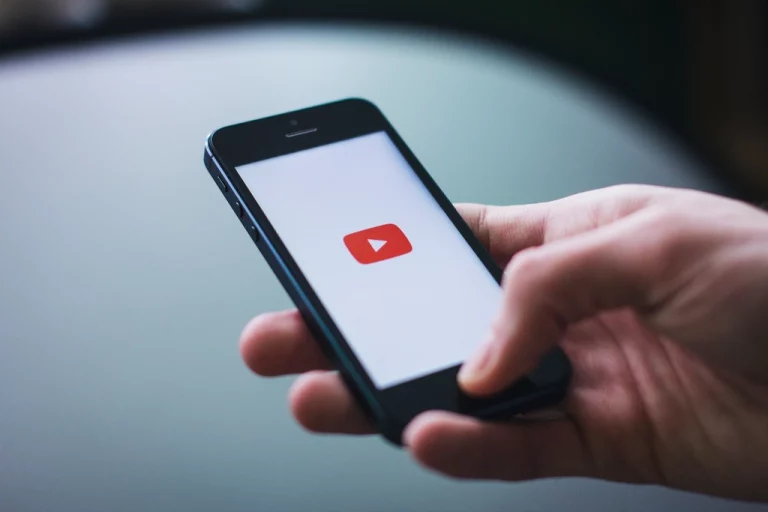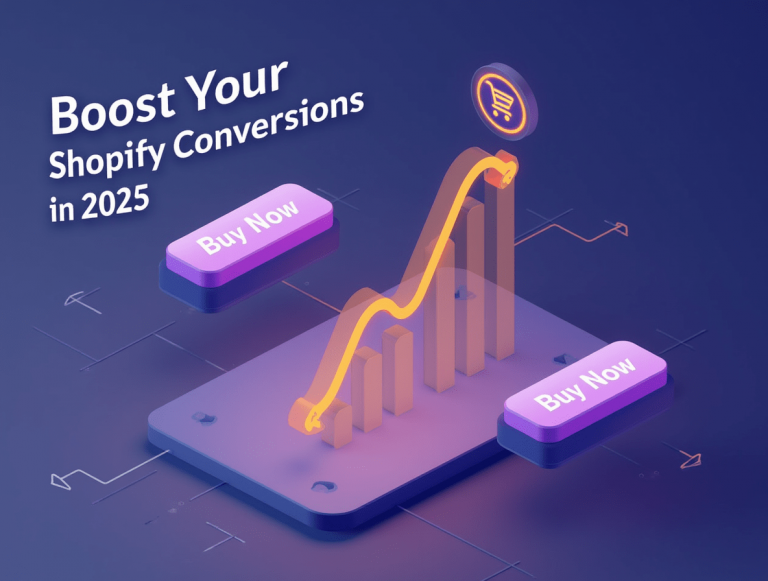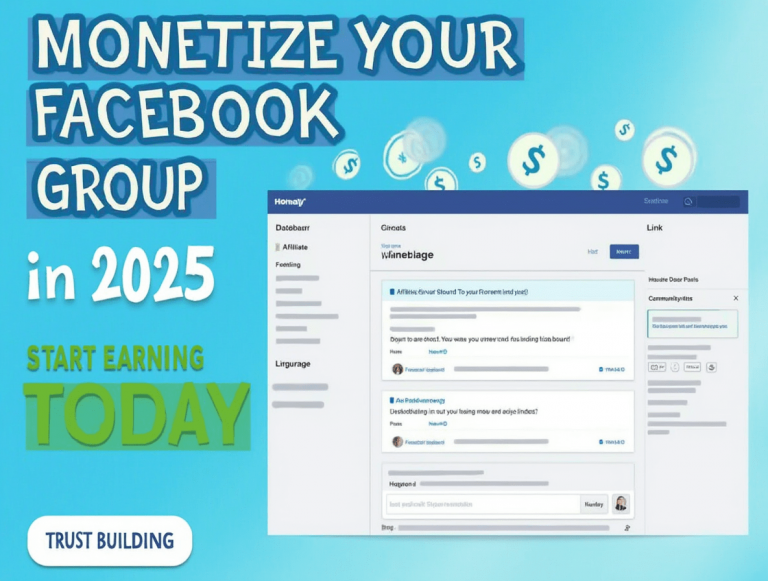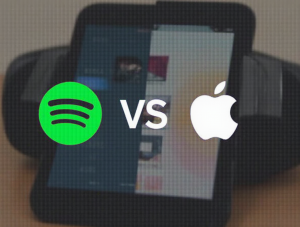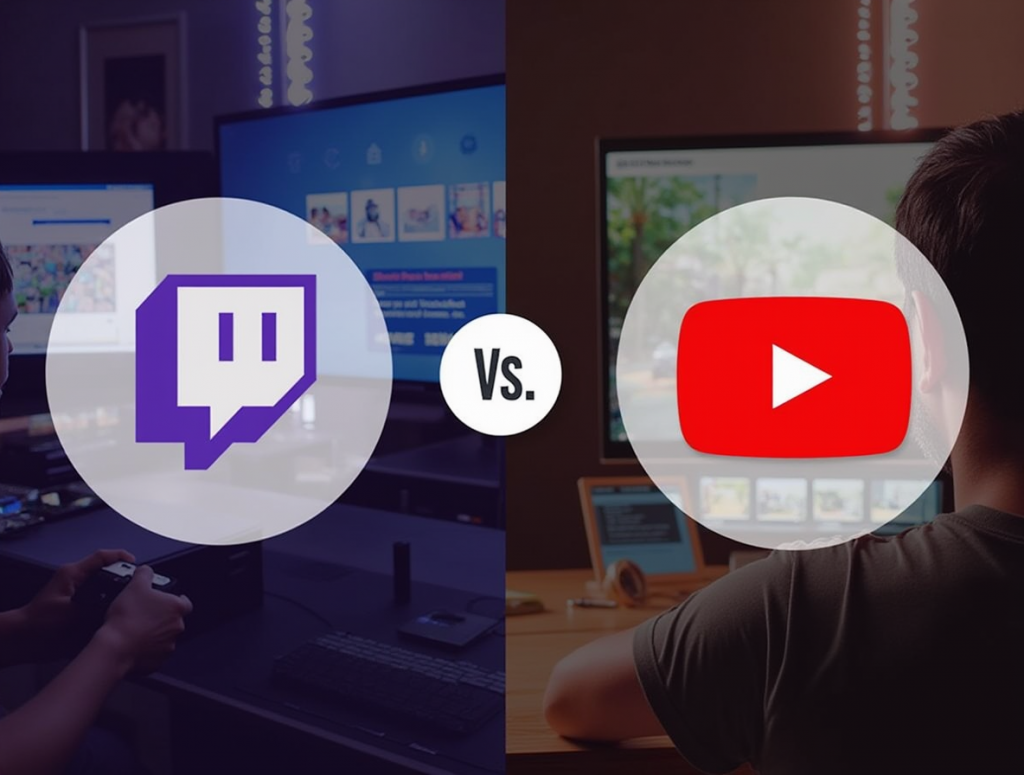
Did you know that top Twitch streamers can earn over $100,000 monthly while successful YouTube Premium creators can generate substantial revenue with just a fraction of the audience size? As the creator economy continues to expand—reaching an estimated $250 billion in 2025—content creators face a crucial decision about which platform will best support their career goals.
Whether you’re just starting your content creation journey or looking to optimize your existing presence, choosing between YouTube Premium and Twitch can significantly impact your growth potential, monetization options, and audience development. Both platforms offer unique advantages, but which one aligns best with your content style and career aspirations?
In this comprehensive comparison, we’ll break down the essential features, monetization options, and audience dynamics of both platforms to help you make an informed decision that sets you up for long-term success.
Understanding the Platforms
What is YouTube Premium?
YouTube Premium is Google’s subscription-based extension of the standard YouTube platform, offering viewers an ad-free experience, background play, and exclusive content for $13.99 monthly. For creators, this means access to Premium Revenue—a share of subscription fees based on how much Premium members watch your content—in addition to standard monetization methods.
Since its rebranding from YouTube Red in 2018, YouTube Premium has evolved into a significant revenue stream for creators who consistently produce engaging content. Unlike regular YouTube, Premium emphasizes watch time rather than ad impressions, potentially rewarding creators who produce longer, more immersive content.
What is Twitch?
Twitch, owned by Amazon, is a live streaming platform primarily focused on gaming content but now encompassing music, art, talk shows, and “just chatting” streams. Twitch’s real-time interaction model creates immediate connection between creators and viewers, fostering community through live chat, channel points, and subscription perks.
The platform’s core monetization features include subscriptions (starting at $4.99 monthly), bits (virtual currency viewers purchase to support streamers), and ads. Partnered Twitch streamers typically receive a 50% revenue split, though top performers can negotiate higher rates.
Audience Reach and Demographics
YouTube Premium Audience
YouTube boasts over 2.7 billion monthly active users worldwide, with Premium subscribers estimated at around 80 million as of early 2025. The platform reaches diverse demographics across almost all age groups, with particularly strong performance in:
- 18-34 year olds (core demographic)
- Educational content seekers
- Product research and tutorial viewers
- International audiences (available in over 100 countries)
YouTube Premium content performs well across devices, with approximately 70% of watch time occurring on mobile devices. The algorithm-driven recommendation system can expose your content to new viewers long after publication, creating an “evergreen” effect for quality videos.
Twitch Audience
Twitch reaches approximately 140 million monthly active users, with a more concentrated demographic profile:
- Core audience of 16-34 year olds (with 65% being male)
- Gaming enthusiasts
- Tech-savvy early adopters
- Community-focused viewers seeking interactive experiences
- Predominantly English-speaking audience (though international growth is occurring)
Twitch excels at cultivating deeply engaged communities willing to financially support creators they connect with. The platform’s real-time interaction model creates stronger viewer-creator bonds but requires consistent streaming schedules to maintain momentum.
Monetization Comparison
YouTube Premium Monetization
YouTube Premium offers creators multiple revenue streams:
- Premium Revenue Share: Earn based on how much time Premium members spend watching your content
- Ad Revenue: Standard monetization from non-Premium viewers (CPM rates varying by niche, geography)
- Channel Memberships: Monthly subscriber perks starting at $0.99
- Super Chat/Super Thanks: One-time viewer donations during premieres and uploads
- Merchandise Shelf: Integrated product sales directly on your channel
- YouTube Shorts Fund: Additional compensation for short-form viral content
YouTube Premium creators benefit from predictable payment structures, with payouts typically occurring monthly once you reach the $100 threshold. The platform handles payment processing, tax documentation, and provides detailed analytics on revenue sources.
Twitch Monetization
Twitch’s monetization model centers around:
- Subscriptions: Monthly recurring payments ($4.99, $9.99, or $24.99) with creators typically receiving 50%
- Bits/Cheering: Platform-specific virtual currency viewers purchase to support streamers
- Ad Revenue: Pre-roll and mid-roll advertisements during streams
- Sponsorships: Direct brand partnerships (often negotiated outside the platform)
- Amazon Associates: Affiliate marketing through product recommendations
- Donations: Direct financial support through third-party services like PayPal or StreamElements
Twitch’s subscription model creates stable monthly income for established streamers, while bit donations provide immediate gratification during memorable stream moments. The platform’s gifted subscription feature allows enthusiastic community members to purchase subscriptions for others, expanding your subscriber base.
Creator Tools and Features
YouTube Premium Creator Features
YouTube Premium gives creators access to:
- YouTube Studio: Comprehensive analytics, scheduling, and community management
- Content ID: Copyright protection and monetization of claimed content
- End Screens and Cards: Interactive elements to drive viewer engagement
- Chapters: Content organization for improved viewer experience
- Premieres: Event-style first viewings with live chat
- Live Streaming: Integrated broadcasting with Super Chat monetization
- Community Posts: Text and image updates for subscribers
- Analytics: In-depth performance metrics and audience insights
YouTube’s editing tools, thumbnails, and description fields provide extensive opportunities for optimization and discoverability. The platform also offers translation tools to reach international audiences.
Twitch Creator Features
Twitch provides streamers with:
- Stream Manager: Real-time broadcasting control center
- Extensions: Interactive overlays and viewer engagement tools
- Channel Points: Custom rewards for viewer engagement
- Polls and Predictions: Interactive audience participation features
- Raids: Directing viewers to another channel at stream’s end
- Clips: Viewer-created highlights from streams
- Stream Teams: Collaborative creator groups
- Detailed Analytics: Performance metrics and viewer behavior data
Twitch’s Squad Stream feature allows up to four creators to broadcast together, potentially exposing your content to new audiences. The platform’s mod tools and AutoMod help maintain positive chat environments during live broadcasts.
Growth Potential and Discoverability
YouTube Premium Growth Factors
YouTube’s growth opportunities include:
- Search Engine Optimization: Videos discoverable through both YouTube and Google search
- Recommendation Algorithm: Content suggested to viewers based on interests and watch history
- Evergreen Content Value: Videos continuing to generate views and revenue for years
- Multiple Entry Points: Viewers finding content through search, recommendations, playlists, and external links
- Cross-Platform Sharing: Easy distribution across social media and websites
YouTube Premium content benefits from enhanced visibility as Premium subscribers see fewer competing creators through ads. The platform’s robust search functionality helps viewers find specific content addressing their needs.
Twitch Growth Factors
Twitch’s growth mechanisms include:
- Category Browsing: Viewers exploring content by game or interest area
- Raids and Hosts: Community-driven viewer sharing between channels
- Networking: Collaborative opportunities within streamer communities
- Consistency Rewards: Algorithm favorability for regular broadcasting schedules
- Discoverability Features: Tags, thumbnails, and titles for browsing optimization
Twitch’s “Just Chatting” category has become the platform’s most-viewed section, opening opportunities for non-gaming creators. The platform’s community-building tools create stronger viewer loyalty than more passive video consumption.
Content Style Considerations
Ideal Content for YouTube Premium
YouTube Premium rewards:
- High-Production Value: Professional editing, lighting, and audio quality
- Educational Content: Tutorials, explanations, and informational videos
- Episodic Series: Structured content that builds viewer investment
- Long-Form Content: In-depth exploration of topics (10+ minutes)
- Specialized Niche Content: Targeted videos serving specific interests
- Searchable Topics: Content addressing specific questions or needs
Content that maintains strong retention metrics (watch time percentage) performs particularly well in the Premium ecosystem, as the platform rewards creators who keep subscribers engaged longer.
Ideal Content for Twitch
Twitch favors:
- Live Personality-Driven Content: Real-time engagement and authentic reactions
- Gaming and Commentary: Gameplay with engaging commentary
- Community Interaction: High viewer engagement and participation
- Extended Sessions: Longer broadcasts (2+ hours) allowing viewer accumulation
- Consistent Scheduling: Regular streaming times building viewing habits
- Reactive Content: Responding to current events, trends, or audience input
Twitch content often benefits from a more casual, authentic approach that prioritizes creator-viewer interaction over polished production. The platform rewards creators who consistently engage with chat and acknowledge supporter contributions.
Platform Limitations
YouTube Premium Challenges
Content creators should consider these YouTube Premium limitations:
- Algorithmic Unpredictability: Changes can significantly impact visibility
- Competitive Saturation: High volume of professional content in many niches
- Limited Live Interaction: Less immediate creator-viewer connection than Twitch
- Delayed Feedback Loop: Longer wait to gauge content performance
- Premium Subscriber Concentration: Certain content categories have higher Premium viewership than others
YouTube’s copyright strike system can present challenges for creators using third-party content, even in transformative ways. The platform’s monetization requirements (1,000 subscribers and 4,000 watch hours) create initial barriers for new creators.
Twitch Challenges
Twitch creators face these potential obstacles:
- Schedule Demands: Success typically requires consistent, frequent streaming
- Discoverability Issues: Harder for new streamers to gain initial visibility
- Content Permanence: Live content doesn’t provide long-term discoverability unless highlighted
- Geographic Timing Challenges: Stream schedules may limit international audience growth
- Technical Requirements: Reliable internet and capable hardware needed for quality streams
Twitch’s partnership program requirements (average of 75 concurrent viewers over 30 days) can be difficult to achieve without existing audience sources. The platform’s focus on real-time engagement makes content creation more performance-intensive than pre-recorded videos.
Strategic Platform Utilization
Cross-Platform Synergy
Many successful creators leverage both platforms by:
- Live Streaming on Twitch: Building community through real-time interaction
- Publishing Edited Highlights on YouTube: Creating discoverable, evergreen content
- Using YouTube for Growth: Attracting new audience members through search
- Using Twitch for Monetization: Converting engaged viewers into subscribers and bit donors
- Platform-Specific Content Strategies: Tailoring content approach to each platform’s strengths
This hybrid approach maximizes reach while diversifying revenue streams, though it requires additional time investment and content management.
Platform Migration Considerations
When considering switching platforms, evaluate:
- Audience Portability: How easily your community will follow to a new platform
- Content Adaptability: Whether your style translates well to different formats
- Revenue Disruption: Potential income changes during transition periods
- Platform Stability: Long-term viability of business models
- Personal Work Style: Which platform better aligns with your creation preferences
Some creators maintain presence on both platforms while emphasizing one as their primary content home.
Conclusion
The choice between YouTube Premium and Twitch ultimately depends on your:
- Content style and format preferences
- Desired audience interaction level
- Personal streaming/recording schedule flexibility
- Monetization priorities
- Growth and discoverability needs
YouTube Premium offers stronger opportunities for creators producing high-quality, evergreen content with broader appeal across demographics. The platform rewards production value, SEO optimization, and content that maintains viewer attention over time.
Twitch provides superior options for personality-driven creators who thrive on live interaction, community building, and consistent scheduling. The platform’s subscription model can create more predictable income for established streamers with engaged communities.
For many content creators, the most effective approach involves strategically leveraging both platforms’ strengths while focusing primary efforts where your content style and career goals align best. As both platforms continue evolving their creator tools and monetization methods, staying adaptable will remain crucial for long-term success.
FAQ Section
Do YouTube Premium creators earn more than regular YouTube creators?
YouTube Premium creators earn revenue from both regular ad-supported viewers and a share of Premium subscription fees based on watch time from Premium members. This dual revenue stream can increase earnings, particularly for creators whose content appeals to Premium subscribers (often longer, higher-quality videos with minimal interruptions).
How much do Twitch streamers make compared to YouTube creators?
Income varies dramatically based on audience size and engagement. Mid-tier Twitch streamers (500-1,000 concurrent viewers) typically earn $3,000-$5,000 monthly through subscriptions, bits, and ads. Comparable YouTube creators might earn similar amounts through combined revenue streams, though YouTube’s evergreen content can generate income long-term versus Twitch’s emphasis on live content.
Which platform has better discoverability for new creators?
YouTube generally offers better initial discoverability through search functionality and recommendation algorithms that can surface new creator content. Twitch presents higher barriers to discovery, often requiring external promotion or networking within existing Twitch communities to gain initial visibility.
Can I repurpose content between both platforms?
Yes, many successful creators use both platforms by streaming on Twitch and publishing edited highlights or expanded content on YouTube. However, Twitch Affiliates and Partners must observe exclusivity periods (typically 24 hours) before publishing live content on other platforms.
Which platform provides more stable income?
For established creators, Twitch typically offers more predictable monthly income through recurring subscriptions. YouTube income can fluctuate more based on algorithmic changes, seasonal ad rates, and viral performance variations, though Premium revenue tends to be more stable than standard ad revenue.
